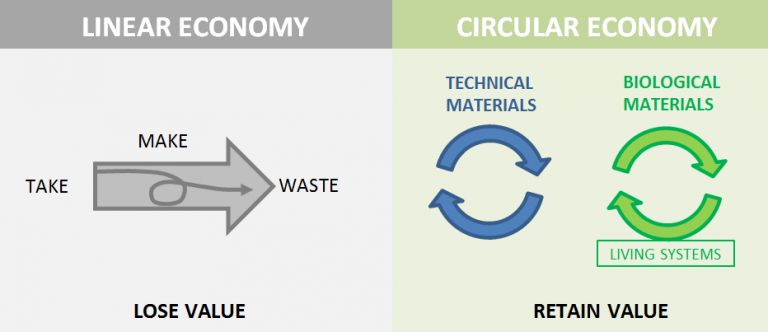The circular economy is a vision about how we make, use and dispose of products in a resource-limited world.
A circular economy is based on renewable resources – either grown or circulated within the economy. The circular economy has no wastes: only resources designed to be feedstocks for other products. Biological materials, such as food, timber and natural fibres are best recirculated through living systems. Technical materials such as metals and plastics are best kept separate from biological materials and reused at the highest possible value.

The challenge has caught the imagination of big business, entrepreneurs, designers and educators who see that the resources, production systems, business models and consumption patterns that have driven the modern economy so far are increasingly no longer fit for purpose.


